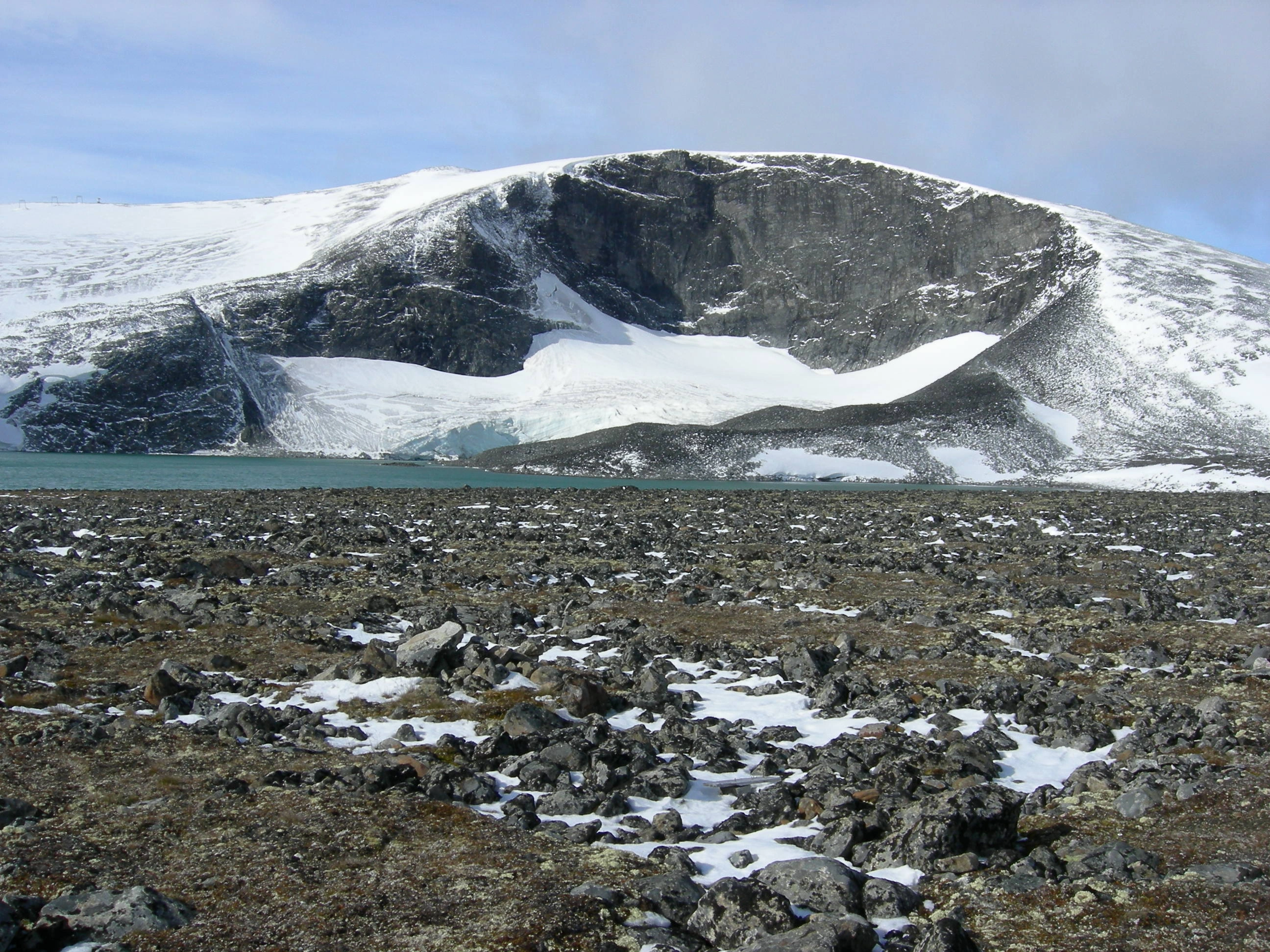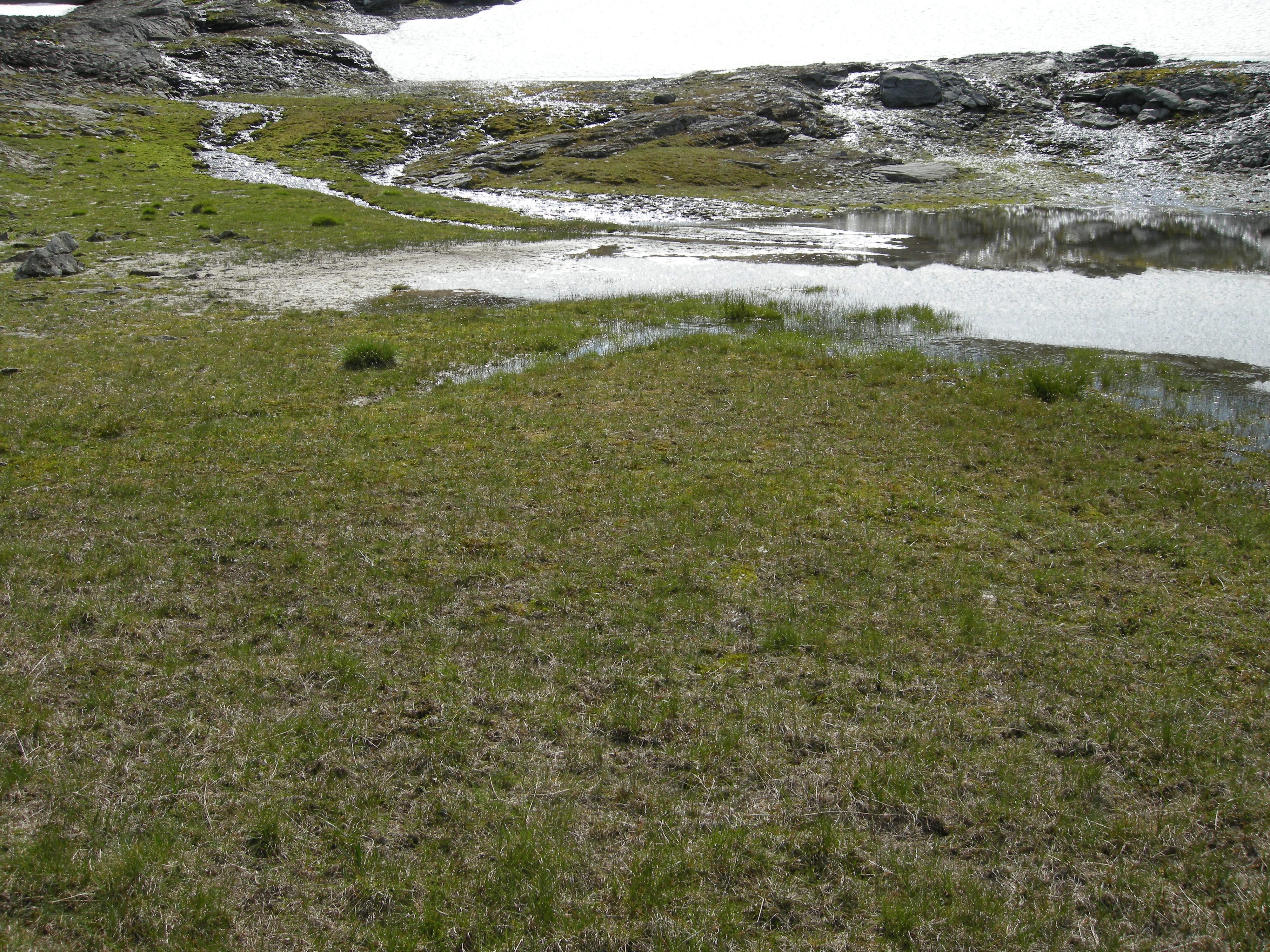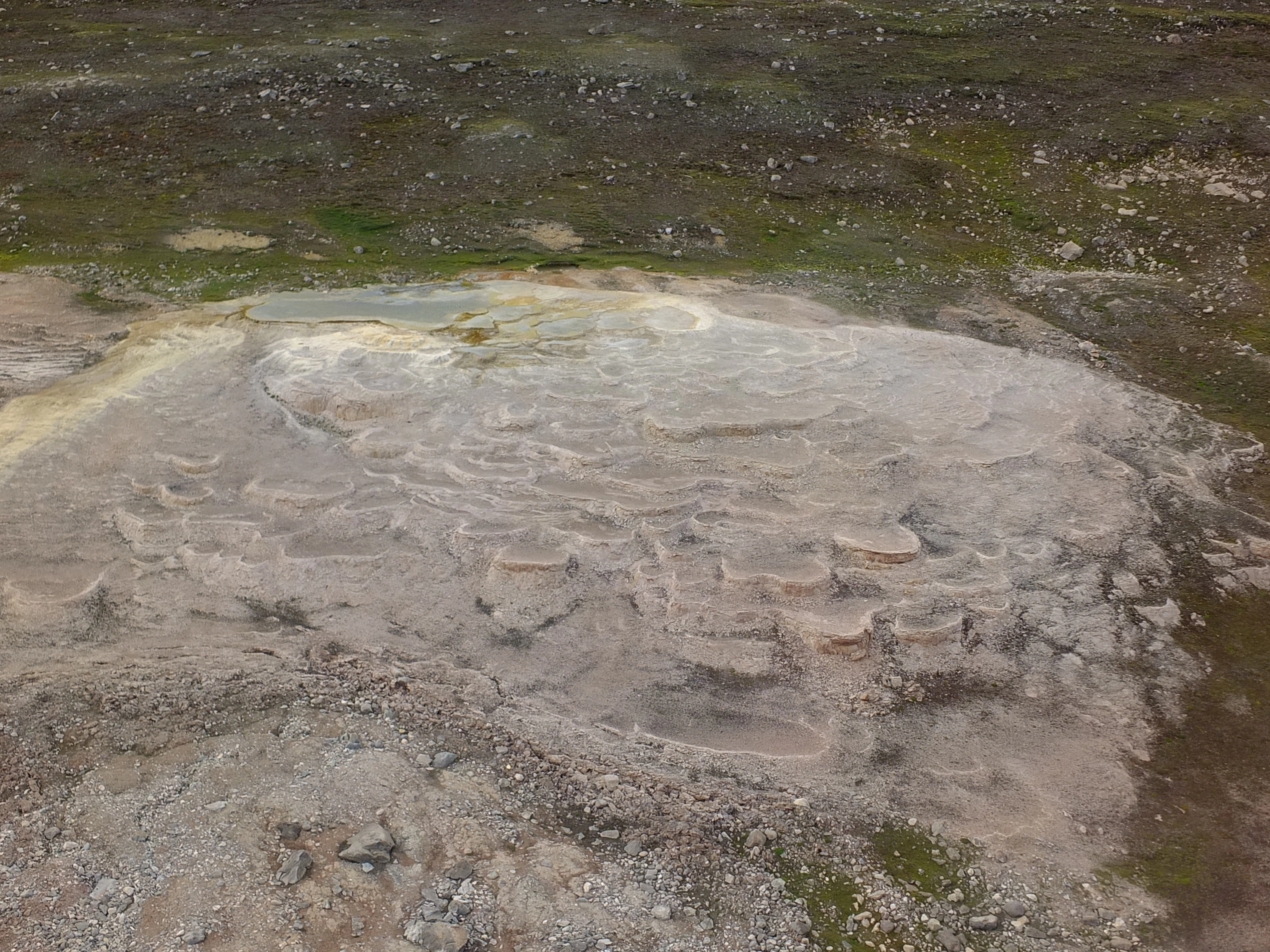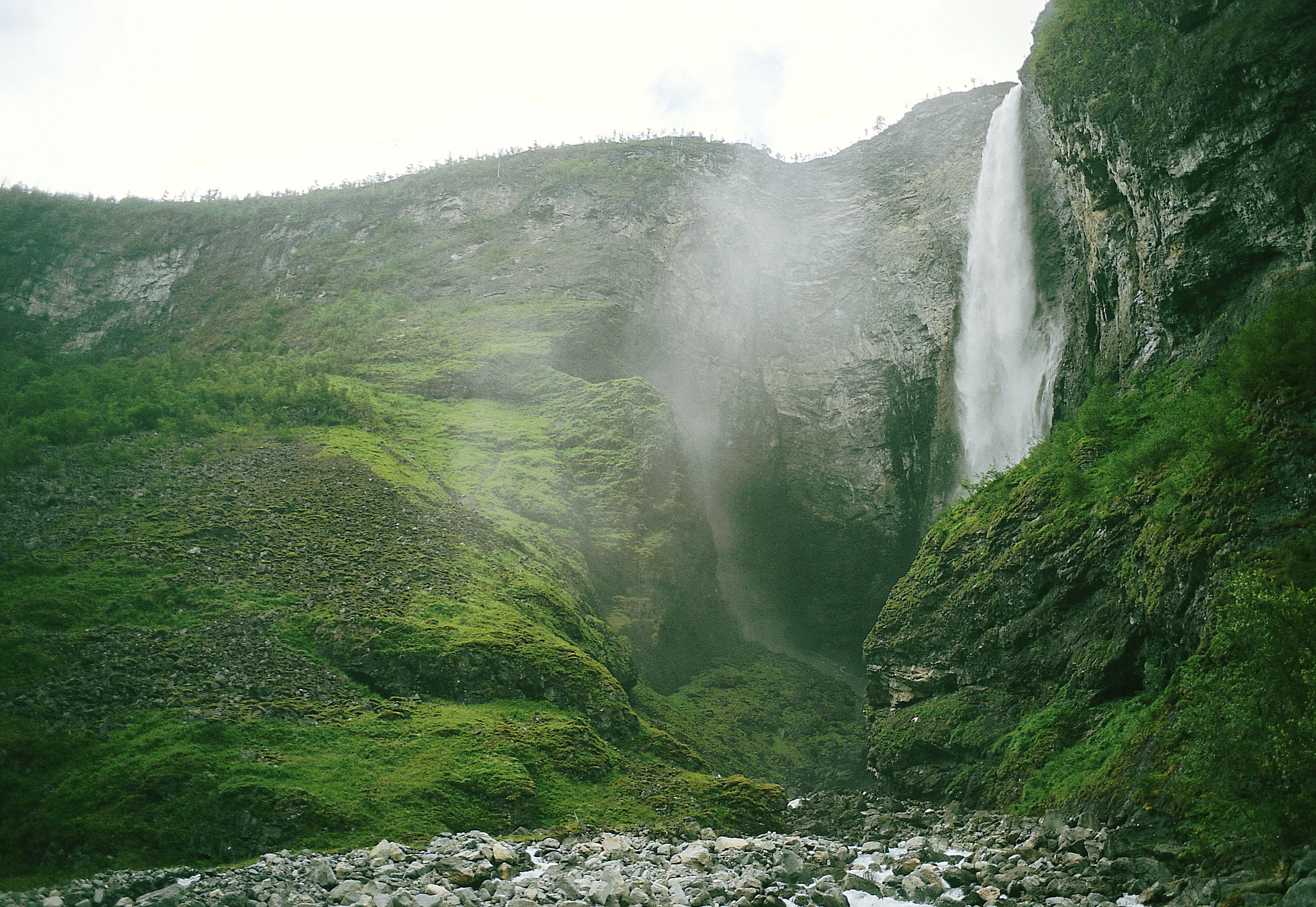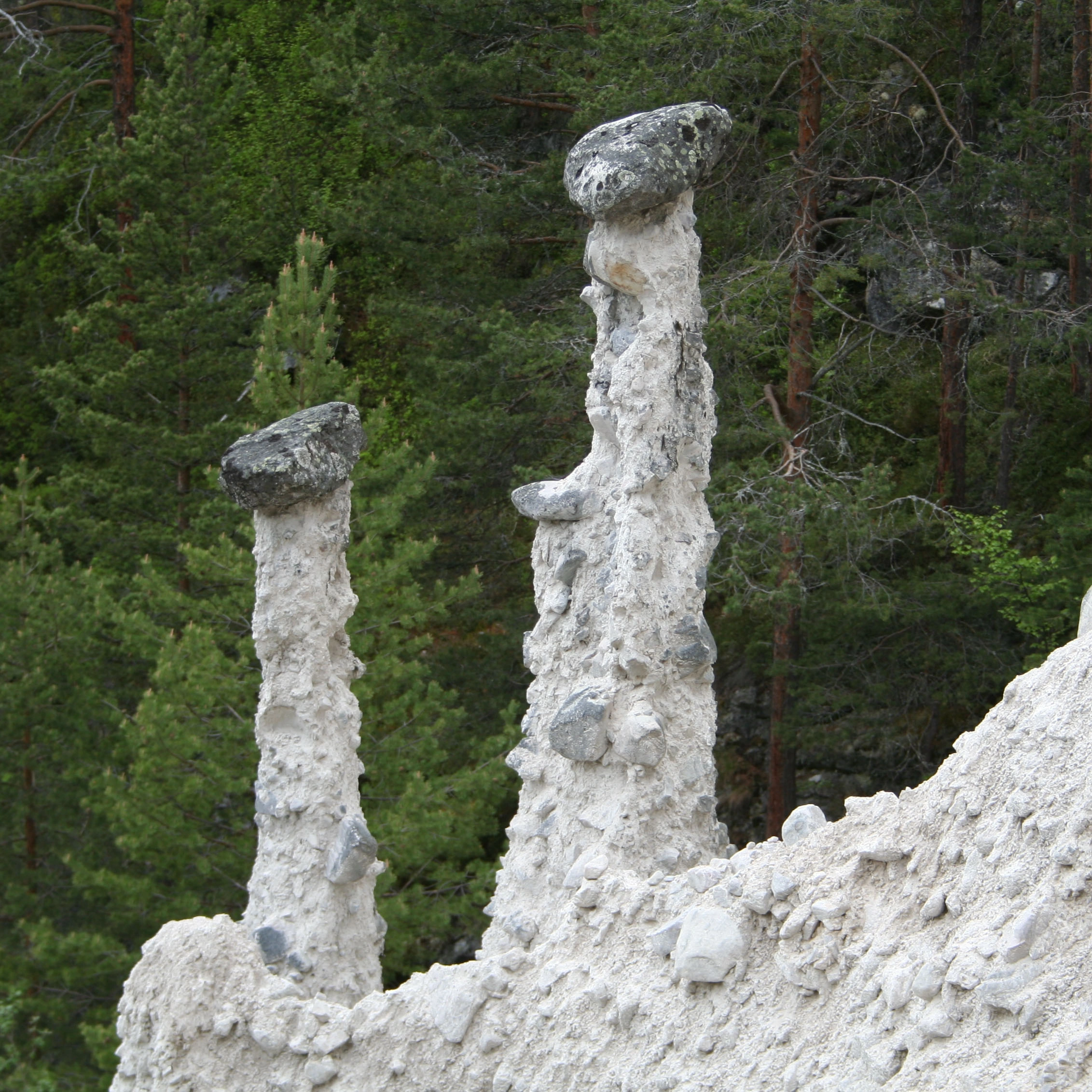Media information – Norwegian Red List of Ecosystem Types 2018
This page contains short texts and images from a selection of the ecosystem types that were red-listed in 2018. Information is provided as to how the photos may be used.
- Innhold
- Glacier
- Snowbeds
- Ultramafic woodland
- Thermal springs on Svalbard
- Waterfall-sprayed meadow
- Coral reef
- Earth pillars
Glacier
Due to climate change, all glaciers on the Norwegian mainland are assessed as Vulnerable.
"The distribution of glaciers depends, first and foremost, on climate. Studies indicate that glaciers on the mainland have diminished considerably in the past 50 years, and that this development will accelerate in the next 50 years, given the latest climate projections", write the experts who assessed glaciers for the Red List.
The experts believe that climate change will also lead to a reduction in the area covered by glaciers on Svalbard, but that the changes in the next 50 years will be much smaller than on the mainland.
The first photo is of Gjuvbreen, a glacier at Gjuvvatnet lake, at Bøverdal in Lom, Innlandet county.
The second photo is of Bøyabreen, a glacier in Fjærland.
Snowbeds
The experts expect that climate change will be of considerable importance for the ecosystem type Snowbed. The snow lies in a snowbed for a long period over summer. This provides a short growth season and almost continual irrigation from meltwater. A hotter climate will lead to a longer growing season and drier snowbeds, the nature of which will change as a consequence. Snowbeds are assessed as Vulnerable.
"Snowbeds are considered to be the most exposed ecosystem type in alpine areas, in terms of climate change, as they contain specialised species that are entirely dependent upon the duration of snow cover" write the experts.
When the snow cover is reduced, the specialised species will have more difficult living conditions. Over time they will be replaced by other species.
The photo shows a snowbed in Oppdal in Trøndelag county.
Ultramafic woodland
Ultramafic woodland is a rare type of pine forest that is found in a few, small and scattered areas. Ultramafic woodland grows where olivinite, a rock containing the mineral olivine, is found in the soil. This mineral is mined commercially in Norway. The experts have reported that two somewhat large sites of ultramafic woodland have collapsed due to mining activity. Commercial extraction of olivine is also expected to significantly impact this ecosystem type in the future. In addition, forestry operations are expected to impact the condition of ultramafic woodland that is situated on productive land, both via clearfelling and possible afforestation with spruce. The ecosystem type is assessed as Endangered EN.
The photo shows ultramafic woodland in Bjørkedalen, in the county of Møre and Romsdal.
Thermal springs on Svalbard
There are three known sites of thermal springs on Svalbard and the ecosystem type is Critically Endangered. The springs have a small geographic distribution (area) and the experts believe that they are still being degraded. They are damaged by visitors bathing and walking in them.
Waterfall-sprayed meadow
The spray from waterfalls can create waterfall-sprayed meadows in areas with a layer of soil within the waterfall spray zone. These can disappear (collapse as an ecosystem type) if the area is requisitioned, or if the intensity of water spray is significantly reduced and the meadows gradually become overgrown. Hydropower development over the past 50 years has led to a reduction in the water spray on both waterfall-sprayed meadows and requisitioned areas. It is expected that the number of new hydropower projects will decline in the next 50 years, but there is some concern that flood prevention measures, implemented as a result of climate change, may even impact the ecological condition of protected watercourses. Waterfall-sprayed meadows are assessed as Vulnerable.
Coral reef
Coral reefs are found across large parts of the world, but in no other place are so many reefs registered as in Norway. Sularevet reef, off the island of Sula, on the coast of Trøndelag county, is the largest cold water coral reef in the world. Coral reef is assessed as Near Threatened on the Red List.
According to the experts, between 30 and 50 percent of all reefs off the Norwegian coast are damaged, to some degree, by bottom trawling. As there is still considerable trawling activity, many of the reefs may disappear completely, as has been observed in a number of areas off the coast of mid-Norway. A number of reefs are also protected but damage to coral reefs that are yet to be discovered must still be taken into account. On the whole, it is estimated that the geographic distribution (area) has decreased by less than 20 percent in the past 50 years.
Earth pillars
Earth pillars are column-shaped landforms, consisting of compacted material from moraines, which have been formed under very special conditions. The only known earth pillars in northern Europe are in Norway, primarily in Sel in Gudbrandsdalen (Kvitskriuprestane – The White Priests), and also in Skåbu and Dovre.
In Sel, the earth pillars are situated on a steep slope. Several of them have collapsed in recent times, and new ones have not formed because the moraine sand has washed away, and for the most part, the slope is prone to landslides. The experts therefore consider it likely that the earth pillars in Sel will collapse within 50 years. In Skåbu and Dovre the pillars are not as well-developed, but will probably have a somewhat longer life expectancy. The ecosystem type is assessed as Critically Endangered.
